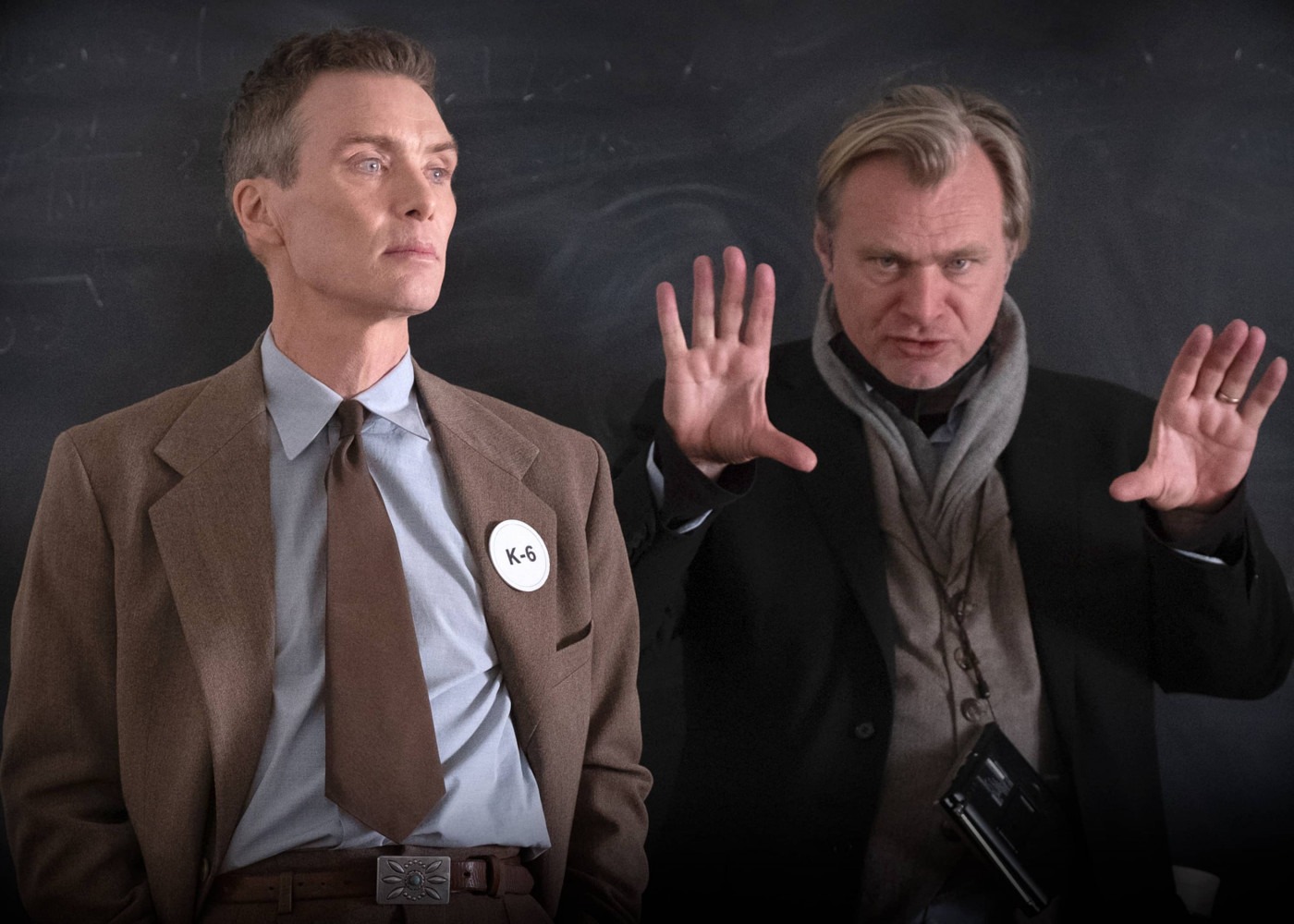What makes Christopher Nolan so popular?
In a cinematic landscape barren with original ideas and auteur filmmaking, Christopher Nolan stands as a beacon of defiance. Nolan believes the film industry is doing ‘great’, as he has “made a three-hour film about Robert Oppenheimer which is R-rated and half in black-and-white – which made a billion dollars”. But this appetite for adult films didn’t seem to last: Martin Scorsese’s three-and-a-half-hour revisionist Western epic about the Osage Murders grossed just $160m on a $200m budget, despite boasting Leonardo DiCaprio in the starring role. So what is it about Nolan that separates his efforts from those of other acclaimed auteurs to the general audience? No doubt, the Barbenheimer marketing phenomenon played a role, but Nolan’s magnum opus held remarkably well after its $82.5m opening weekend.
Film is quintessentially art, and there’s no doubt that Christopher Nolan is an artist. Nolan’s harrowing depiction of Oppenheimer’s psyche during his victory speech following the Trinity Test stands as testament to his artistic prowess, marked by a superlative use of perspective. Yet, Nolan is also something else which separates him from the others – he’s a scientist. Nolan might have graduated from the University College London (UCL) with a degree in English Literature, not Physics, but his analytical and scientific approach to filmmaking makes him appeal to the general audience – a population rife with non-creatives who prefer stories told with logical and rigorous precision.
For Nolan, the plot and concept always come first before the characters
Nolan’s pictures have two distinctive attributes: dealing with big concepts and non-linear storytelling. The former means that each of Nolan’s films can be aptly summarised into singular sentences: whether it’s ‘travelling within dreams’ for Inception, ‘time travel warfare’ in Tenet or ‘order against chaos’ in The Dark Knight. For Nolan, the plot and concept always come first before the characters, neatly demonstrated by the fact John David Washington’s lead character in Tenet isn’t even given a name, but dubbed ‘The Protagonist’. This unique approach to storytelling also furthered or hindered your viewing experience of Dunkirk depending upon your taste, as unlike the majority of war films, which as a genre tends to lean towards melodramatic, it prioritises the battle and visual storytelling over the individual characters: an intentional choice, to demonstrate the hopelessness and lack of narrative for each character as they simply fought for their survival, and not for any larger purpose.
This is what appeals to much of the world: a challenge intellectually, but not emotionally
Audiences are attached to the almost puzzle-like adventure of watching a Nolan film. Whether it is making sense of the dream rules in Inception or figuring out the mysteries presented in Memento or The Prestige, Nolan’s work leaves audiences feeling appropriately challenged. He often incorporates basic but fascinating philosophical quandaries into his films: the climax in The Dark Knight where the Joker forces two separate ferries into a scenario where they have the opportunity to blow the other one up to save theirs is a classic use of the Prisoner’s Dilemma game theory, whilst Oppenheimer invites us to consider the moral ramifications of the nuclear bomb. This genre of storytelling has often proved populist: take the franchise-creating success of The Matrix, which is effectively an adaptation of Nozick’s thought experiment ‘The Experience Machine’. This is what appeals to much of the world: a challenge intellectually, but not emotionally. This approach differs from the majority of acclaimed contemporary directors – Martin Scorsese’s work in Taxi Driver for example is driven completely by the psyche of the protagonist Travis Bickle, with a sparse plot. Even in Oppenheimer, which is 3 hours focused on the titular character with IMAX cameras giving us every inch of Cillian Murphy’s expressions, the film is surprisingly plot-focused even though the screenplay was famously written by Nolan in the first person. The film still employs non-linear storytelling, and as said by Nolan, traverses’ different genres to enhance excitement for the viewers: from origin story to a heist film, to horror, to political thriller.
The focus on the plot over characters doesn’t mean that Nolan’s films are emotionless. Interstellar is often seen as a tear-jerker, but simultaneously has been critiqued for being ‘cold’. This discrepancy comes from the way that Nolan uses dialogue and plot to convey emotions. Nolan is economical with his dialogue and doesn’t like wasting lines: they are either expository dialogue to drive forward the plot or the characters. There are no moments in Nolan’s films where he lets you rest and simply live with the character for a while, which can alienate those who demand that. In Interstellar, our emotions towards Murph are almost completely derived from the plot and the situation rather than our feelings for him as a character. The idea of losing the experience of all of your daughter’s life due to the necessary time travel is what makes many tear up, rather than his individual relationship.
Although commercial success has long been linked to producing films catered towards the lowest common denominator, Nolan has defied this expectation. His unique style marks him as an auteur, and it is good fortune that his style is able to connect with the general audience. Although noted directors like Stanley Kubrick have been dismissive of this form of storytelling, famously saying that ‘the best plot is no apparent plot’, Nolan is one of the few to use the medium to its fullest potential to tell visual stories that we are all attracted to.

Comments (1)
With his handsome and elegant appearance, it is not difficult for him to be famous. I also really like his image in the movie Pinky Blinder.